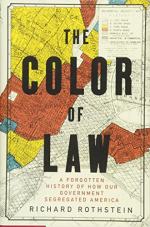
|
| Name: _________________________ | Period: ___________________ |
This test consists of 5 multiple choice questions, 5 short answer questions, and 10 short essay questions.
Multiple Choice Questions
1. In what year did the U.S. Supreme Court uphold racially restrictive covenants as well as exclusionary zoning ordinances?
(a) 1887.
(b) 1984.
(c) 1917.
(d) 1926.
2. What does Rothstein say the people in charge of FHA’s reaction was to their organization’s own findings?
(a) They shifted to a policy of inclusive covenants.
(b) They set a date to change to a non-segregation policy.
(c) They started to remedy segregated neighborhoods.
(d) They did not change the FHA’s discriminatory policies.
3. Whose administration turned racially restrictive covenants into a legal requirement for mortgages?
(a) Woodrow Wilson.
(b) Theodore Roosevelt.
(c) Warren Harding.
(d) Franklin Delano Roosevelt.
4. What does Rothstein say made black families a risk in the mortgage industry?
(a) Their race alone.
(b) Their susceptibility to violence at the hands of whites.
(c) Their likelihood of being overcharged for services and property.
(d) Their vulnerability to exploitative rents.
5. What was the effect of the Hamburg massacre?
(a) Blacks were kept out of government.
(b) Blacks gained representation in government.
(c) Northern whites renewed oversight of the south.
(d) The KKK was forced to withdraw from public.
Short Answer Questions
1. What does Rothstein call the practice of fanning racist fears to drive whites out of their homes to buy the homes cheap and sell them to black families at high prices?
2. Which Constitutional Amendments does Rothstein say are violated by housing discrimination?
3. How does Rothstein characterize the prices African Americans paid for homes bought and flipped by blockbusters?
4. What does the 13th Amendment prohibit?
5. What does Rothstein say the FHA’s appraisal standards included?
Short Essay Questions
1. What does Rothstein cite as evidence that the government is obligated to remedy segregation?
2. How was housing policy affected by the 1968 Jones decision?
3. What was the importance of the Supreme Court’s Buchanan decision in 1917?
4. How do the political parties that operated in America in the late 1800s correspond to today’s political parties?
5. Where does Rothstein say public housing started in the U.S.?
6. How does Rothstein say deeds were used as mechanisms of segregation, and how does he say they were backed as de jure segregation?
7. How did the government overcome expense as a barrier to home ownership under Hoover?
8. What is blockbusting?
9. How did the New Deal affect segregation of housing in the U.S.?
10. What does Rothstein say public housing means now, and what did it originally meant?
|
This section contains 966 words (approx. 4 pages at 300 words per page) |

|




